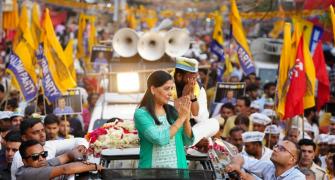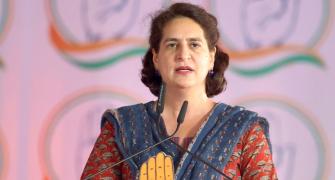"I read Glenarvon too, by Caro Lamb
/ Goddamn!" In 1816, when the Lady Caroline Lamb published her infamous roman à clef, Glenarvon, Lord Byron's response summed up his dismay at discovering the history of their tempestuous romance preserved for posterity. Glenarvon, now barely read, went into multiple editions at the time; Caro Lamb was ostracized and condemned; Byron continued his devastating career despite the scandal.
The reviews were stern and moralistic (the British Critic lamented the sorry influence of the excesses of the wicked, depraved Continent-oh, those Italians!-upon staid, upright English society), and the sales were spectacular: in other words, Glenarvon surpassed the hopes that any publisher of a roman à clef may harbour.
Good fiction and good gossip have a lot in common-so does bad fiction. James Wood once dismissed John Updike's suburban-America stories as so much "gossip in gilt". The pleasure of the roman à clef lies in the drawing-room thrill of the guessing game, as has happened with Hindutva, Sex and Adventure (Roli Books), by 'John MacLithon'.
Hindutva, Sex and Adventure is a silly season book. At 166 pages, it fictionalizes the life, amours and journalistic biases of one of India's best known adopted foreign journalists, Mark Tully, badly disguised as Andrew Lyut. It's slight, but has enough insider dope to do well at the Foreign Correspondents Club, and bets on the author's identity have been placed in the very best Delhi salons. (The smart money's on Francois Gautier, despite his denials-Gautier hints that Tully himself wrote the novel, and Bernard Imhasly is the third favourite in the Identify MacLithon stakes.) How does it stack up against roman à clefs of the past?
Bengal Nights, Mircea Eliade: This lyrical, and I use the word with prejudice, lush and overblown 1933 novel romanticizes the relationship between Alain (Eliade himself) and Maitreyee Debi, poet, protégée of Tagore, and daughter of a renowned Bengal philosopher. Though Eliade refers in passing to the social world of 1930s Calcutta, most of his focus is on the ineffable, mystical aspects of his affair, where Maitreyee Debi stands in for the mysterious East. Decades later, she responded in kind with the equally sonorous It Does Not Die (Na Hanyate), making this a rare instance where the novel does duty as syrupy love letter.
Beethoven Among The Cows, Rukun Advani: Though this isn't a classic roman à clef, this early novel by a highly respected publisher included an unforgettable portrait of the scholar Gayatri Spivak. "Professor [Lavatri] Alltheorie's Collected Marxist Phonecalls had outsold Gone With The Wind
Her Collected Feminist Faxes was in press. Her opponents defined her subject-position with a law-Lavatri's Law: Incredible Articulation + Incredible Incomprehension = Incredible Salary."
The Insider, PV Narasimha Rao: This 1998 novel by a former Indian PM is now justly forgotten; Rao's political revelations were overshadowed by his fondness for his upright, morally anguished protagonist, Anand. It was widely assumed that his characters were based on the politicians of the day Sanjeeva Reddy, Brahmananda Reddy, Lakshmikantamma and V.B. Raju, among others. At 767 pages, it suffered from the defects of a great deal of Indian political writing-the gossip wasn't good enough to justify the prolixity.
A Suitable Boy, Vikram Seth: Seth's magnum opus included a vast array of cleverly executed sketches of post-Independence politicians-GB Pant, CB Gupta and Fakhruddin Ali Ahmed appeared under various pseudonyms. The novel had ambitions beyond the scope of the conventional roman à clef, and lived up to them, but he was devastatingly accurate-especially in the Calcutta sections. The lady intellectual who speaks of Duality and Oneness, the father-and-son lawyer pair known as the Bony Bespectacled Banerjis and the gorgeous, unfaithful boxwallah's wife were among the many characters based on real persons, which may explain why A Suitable Boy continues to sell like sandesh in Bengal.
With the exception of Seth's fiction, most Indian roman à clefs have followed the Glenarvon route. Mrinal Pande's My Own Witness touched on the early years of TV stardom in India, with Prannoy Roy and Pritish Nandy easily identifiable in her cast of characters. It made a brief stir in 2001, just as Aatish Taseer's The Temple-Goers (with characters loosely based on V S Naipaul, Vasundhara Raje Scindia and Mala Singh is receiving some critical attention today. Back in 1816, C Lemon wrote to Lady Frampton of Glenarvon that there was "no connection between any two ideas in the book", and expressed further disapproval. Having done so, she provided a key to the characters-so and so was Lady Oxford, such and such Lady Holland-that made it clear she had read her way avidly through the novel, despite her criticism.
Hindutva, Adventures and Sex, like Kanika Gahlaut's 2002 expose of Eminence Greases and fashion victims in Delhi, Among The Chatterati, is unlikely to last more than a season; a better roman à clef may last a decade; but they're not meant to last. The roman à clef promises entertainment for the moment, insider gossip and perhaps a little in the way of snapshot wisdom. It's as serious, and as frivolous, as the changing fashions of the day.








